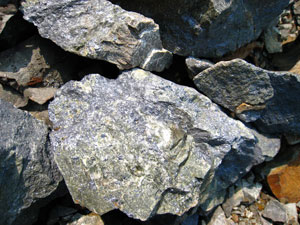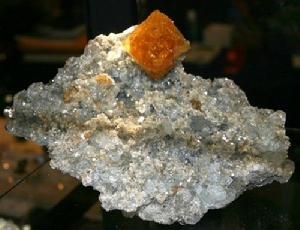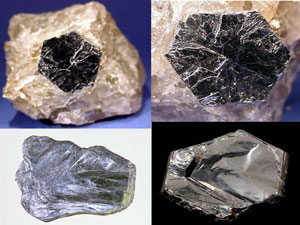Where Molybdenum Was Discovered
Molybdenum Discovery and Industrial Development
A Brief History of the Discovery of Molybdenum
Although molybdenum was officially discovered in the late 18th century, evidence shows it was used earlier. In the 14th century, Japanese craftsmen produced knife blades from molybdenum steel. In the 16th century, molybdenite exhibited physical properties that resembled lead, lead sparkle and graphite. Europeans termed these minerals "molybdenite".
In 1754, Swedish chemist Bengt Andersson Qvist analysed molybdenite and determined that it did not contain lead. Consequently, he concluded that molybdenite and lead sparkle were distinct substances.
In 1778, Swedish chemist Scheler observed that nitric acid did not react with graphite. When applied to molybdenite, nitric acid produced a white powder. This powder was then boiled with an alkaline solution to crystallise a salt. Scheler inferred that the white powder was a metallic oxide mixed with charcoal from intense heating and not a metal. He further considered that the combination of the original molybdenite with sulphur after heating represented an unknown mineral.
Inspired by Scheler, Swedish chemist Hjelm employed the carbon reduction method in 1781 to extract a new metal from the white powder. He named the metal "Molybdenum".
Development of the Molybdenum Industry
Molybdenum oxidises easily and is brittle. Its refining and processing methods are limited. Consequently, it could not be mechanically processed for widespread industrial production. Only a few molybdenum compounds were used. In 1891, France's Snyder Schneider pioneered the use of molybdenum as a steel alloy element to produce armour plate. He found that its performance met technical requirements. The density of molybdenum is approximately half that of tungsten. Consequently, tungsten was gradually replaced as a steel alloy element and industrial usage of molybdenum began.
In 1900, the ferromolybdenum production process was developed. Molybdenum steel fulfilled the specific performance requirements of weapon steel. Consequently, production of molybdenum steel expanded rapidly by 1910. Since then, molybdenum has become an important component in heat-resistant and corrosion-resistant construction steels. It has also become an essential part of non-ferrous nickel and chromium alloys.
Molybdenum metal is widely used in the electrical industry. Powder metallurgy production and processing techniques for dense metals have been thoroughly studied. The outbreak of the First World War led to an increased demand for tungsten. A shortage of molybdenum accelerated the substitution of tungsten steel due to its high hardness and impact toughness. Given the rising demand, new molybdenum resources were sought. A large Clay-Max molybdenum deposit was discovered in Colorado, USA, and mining began in 1918.
To counteract the marked decline in demand after the First World War, researchers examined new civil industrial applications for molybdenum. For example, molybdenum-containing steels were used in wheel production. In 1930, researchers proposed that forging and heat treatment of high-speed molybdenum-based steel should achieve a specific grade. Consequently, a new market for molybdenum as an alloying element emerged. By the late 1930s, molybdenum had become a commonly used industrial raw material. During the Second World War, the American company Clay Max Molybdenum developed a vacuum arc remelting process. This process yielded molybdenum ingots weighing between 450 and 1 000 kilograms. Consequently, molybdenum found further application as a construction material.
Today, high-purity molybdenum and nanocomposites are central to research at institutions such as Stanford Advanced Materials and Oceania International LLC. The application range of molybdenum expands continually. It is used in steel production, petroleum processing, chemical manufacturing, electrical and electronic technology, medicine and agriculture.
Classification of Molybdenum Ores
Simple Molybdenum Ore
The ore primarily consists of molybdenum.

Copper-Molybdenum Ore
Molybdenum ore is associated with sulphide minerals of various copper ores.

Molybdenum Ore
Molybdenum ore is associated with tungsten ore.

Carbon-containing Copper-Molybdenum Ore
The ore contains organic carbon and carbon-bearing slate. Molybdenite and carbon-containing siliceous slate coexist. This type of carbon-containing copper-molybdenum ore is black, dense and compact. It contains 2.94% carbon and has a density of 2.73g/m³. The carbon-bearing slate comprises microcrystalline quartz, fine carbon particles, small amounts of iron oxide particles and clay-containing chlorite.

 Bars
Bars
 Beads & Spheres
Beads & Spheres
 Bolts & Nuts
Bolts & Nuts
 Crucibles
Crucibles
 Discs
Discs
 Fibers & Fabrics
Fibers & Fabrics
 Films
Films
 Flake
Flake
 Foams
Foams
 Foil
Foil
 Granules
Granules
 Honeycombs
Honeycombs
 Ink
Ink
 Laminate
Laminate
 Lumps
Lumps
 Meshes
Meshes
 Metallised Film
Metallised Film
 Plate
Plate
 Powders
Powders
 Rod
Rod
 Sheets
Sheets
 Single Crystals
Single Crystals
 Sputtering Target
Sputtering Target
 Tubes
Tubes
 Washer
Washer
 Wires
Wires
 Converters & Calculators
Converters & Calculators
 Write for Us
Write for Us
 Chin Trento
Chin Trento



